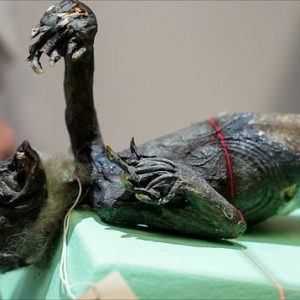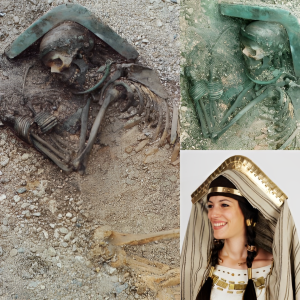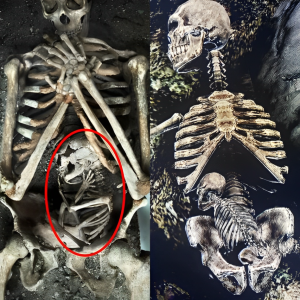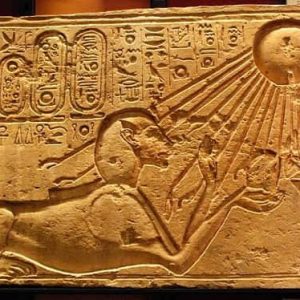
In the midst of artificial intelligence and cutting-edge language models, a significant archaeological discovery has unfolded in Boğazköy-Hattusha ( Hattusa), the old Hittite capital in Turkey. Archaeologists have unearthed a previously unknown ancient language in a cultic ritual text, adding a fresh dimension to our understanding of Late Bronze Age Anatolia.
The Hattusa archaeological site in north-central Turkey is an ancient Hittite rock sanctuary and open-air shrine. Boasting impressive rock reliefs depicting deities and mythological scenes, the earliest settlement dates back to the Late Bronze Age (1650 to 1200 BC), when the Hittite Empire dominated the region.
Hattusa was an ancient capital of the Hittite Empire , and until now, among the most impressive discoveries at this UNESCO World Heritage Site, was a representation of the Storm God “Tarhunt,” who symbolized the Hittite pantheon’s strength and power. However, a recent excavation has unearthed a hitherto unknown Indo-European language.
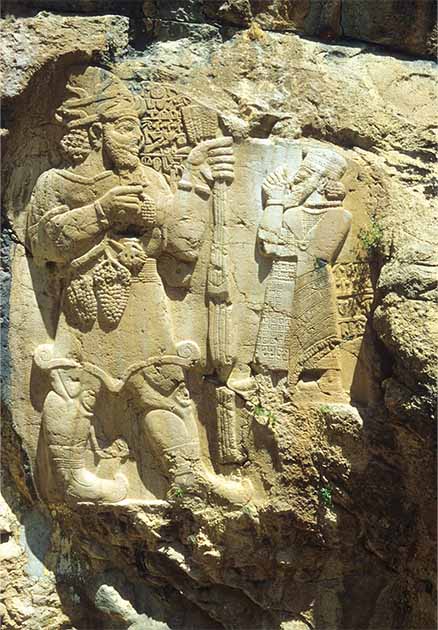
A Hittite relief of the Storm God, Tarhunt, at Halkapınar, Konya near Ivriz, in Turkey (Klaus-Peter Simon / CC by SA 3.0 )
Reaching New Archaeological Heights
Excavations at Hattusa have been undertaken for over a century, mostly under the direction of the German Archaeological Institute . Under the watch of the current site director, Professor Andreas Schachner of the Istanbul Department of the German Archaeological Institute, numerous cuneiform tablets have been unearthed.
In total, around 30,000 clay tablets inscribed with cuneiform writing have been recovered from this site. While these tablets offer archaeologists insights into Hittite cultural traditions, Professor Daniel Schwemer, head of the Chair of Ancient Near Eastern Studies at Julius-Maximilians-Universität (JMU) Würzburg in Germany, said the recent discovery of “a previously unknown Indo-European language,” reaches new archaeological heights.
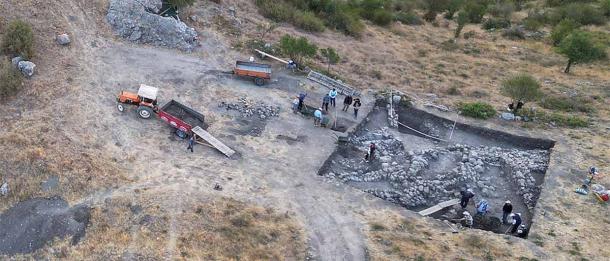
A cuneiform tablet with a previously unknown Indo-European language was discovered at this excavation site at the foot of Ambarlikaya in Boğazköy-Hattusha in Turkey. (Image: Andreas Schachner / Deutsches Archäologisches Institut )
Hidden in a Cultic Ritual Text
The newly found language appears in a cultic ritual text written on a clay tablet in the Hittite language, which is the oldest attested Indo-European language. But in one section, there is a recitation “in a hitherto unknown language,” opening new doors leading to lost libraries of information about life in Late Bronze Age Anatolia. In an article by the University of Würzburg , Professor Schwemer said he is currently analyzing the “never before seen” cuneiform language.
Schwemer’s primary steps allow him to assert that the Hittite ritual text reflects “the language of the land of Kalašma,” also known as Kaleshwar, an ancient city located in present-day Pakistan. In ancient times Kalašma, was part of the region historically associated with the Gandhara civilization, but also the Achaemenid Empire , the Maurya Empire , the Greco-Bactrian Kingdom , the Indo-Greek Kingdom, the Kushan Empire , and later the Gupta Empire .

Hittite Priests Loved Foreign Languages
Daniel Schwemer said the recovery of the currently unknown language at Hattusa “is not entirely unexpected.” His rational for this claim is that the scribes of the Hittite kings were “uniquely interested in recording rituals in foreign languages.” Nevertheless, it doesn’t diminish its importance.
Other tablets discovered at the site were written in Anatolian, Syrian, and Mesopotamian languages, and the recorded rituals serve archaeologists as linguistic maps of greater Late Bronze Age Anatolia, and with the Hittite empire.
Professor Elisabeth Rieken from the Philipps-Universität Marburg is a specialist in ancient Anatolian languages, and she worked alongside Daniel Schwemer in the study of the tablets. Rieken said the recently discovered cuneiform texts, unearthed at Hattusa, “were written in Luwian, Palaic, Hattic, and a non-Indo-European language.”
The March to Restore Lost Languages
The tablets also contained the newly discovered Kalasmaic language, which according to Professor Daniel Schwemer, “is currently largely incomprehensible.” Rieken said that while it is known the language belongs to the family of Anatolian-Indo-European languages, “despite its geographic proximity to the area where Palaic was spoken, the text seems to share more features with Luwian.”
In the pursuit of advancing the frontiers of linguistic archaeology and resurrecting an almost lost language, the scientists plan to embark on a rigorous investigation. Their primary objective lies in examining the linguistic nuances of the Kalasma, a recently unearthed ancient language, and delineating its affinities with other Luwian dialects prevalent during the Late Bronze Age in Anatolia.
This comparative analysis stands poised to shed invaluable light on the intricate tapestry of ancient Anatolian civilizations and language evolution, marking a major step towards linguistic revitalization and historical comprehension.

